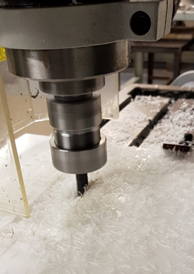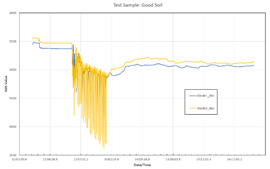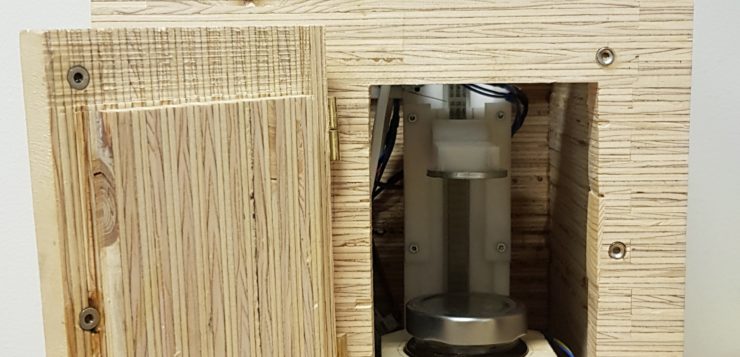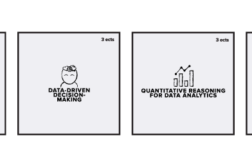Innovation requires several elements to be successful. These elements include (this list is not exhaustive!) access to the required skills base, sound resources, and access to appropriate facilities to realize your prototypes and try out your best ideas. Without these basic requirements, the process of bringing good ideas to fruition can be a very frustrating and time-consuming effort.
I have been working on two funded projects in the last few months that required a unique and specific access to high quality workshops. Apart from high quality machines, the variety of of tools available in these workshops are also important – not having access to a specific machine (that may be rarely used) can become a critical factor in your process.
To provide a little background – when you are building unique machines, it pays to plan properly in advance. But even the best planning sometimes falls short, as you build parts of the prototype. Testing and partial validation along the way is a crucial part of the process. Continuous testing most of the time reveals a better way to build a component (or different materials), or your testing indicates that the solution is not optimal (and off course, there is an unspeakable worst-case scenario!). In short, the building process is recursive, with lots of testing and validation stages between ideation and completion of the process.
The equipment I have been building are for use in the HAMK Bio environment, and it would be used test soil qualities such as soil hydrophobicity and soil aggregate stability. The first relates to the carbon content of soils (too much carbon makes the soil hydrophobic), and the latter relates to a measure to determine how easily soils may erode. Both these topics are important for managing the agricultural sector in terms of the changing climate.
The theory and methodologies behind both machines have been researched intensively, with numerous  data sets from early prototypes built to prove the concepts. From these datasets it was found that both the quality of these instruments is dependent on good quality components, and high precision fabrication methods. Finding the best materials to produce components and elements proofed to be the first issue, and an associated issue was to find a workshop that can provide access to the tools required. The materials decided on were a mixed bag: there are components requiring stainless steel, aluminum, mild steel, engineering plastics, wood, several elegantly designed 3D printed components, and off course, the electronic components. Manipulating these materials therefore requires well tooled workshops. Both the metal and wood workshops were found at the HAMK Design Factory, and both are well equipped to perform the tasks needed for these two projects.
data sets from early prototypes built to prove the concepts. From these datasets it was found that both the quality of these instruments is dependent on good quality components, and high precision fabrication methods. Finding the best materials to produce components and elements proofed to be the first issue, and an associated issue was to find a workshop that can provide access to the tools required. The materials decided on were a mixed bag: there are components requiring stainless steel, aluminum, mild steel, engineering plastics, wood, several elegantly designed 3D printed components, and off course, the electronic components. Manipulating these materials therefore requires well tooled workshops. Both the metal and wood workshops were found at the HAMK Design Factory, and both are well equipped to perform the tasks needed for these two projects.
I mentioned that access to skills is also part of the success in innovation. The list of widely different materials requires relatively unique methods to manipulate and is just as important. Having found the workshops at the HAMK Design Factory, the skills were also found at the Design Factory. The friendly Markku Mikkonen was almost always available to help with specific queries and advice on the machining of the different materials.
Both instruments have been manufactured from a very thick and strong engineering plastic with a high Young’s modulus value (it has stable dimensions under a range of temperatures), and very strong. Precision slots and wells were milled into the plastic, as well as numerous holes drilled and tapped in order to use bolts as fasteners. Smaller pieces were also precision cut to accommodate the tensioning of stepper belts. Interestingly, manipulating the plastic required the use of tools and machines from both the metal and wood workshops. A lot of fine metal work was done to cut unique axle holders, and joiners were precision shaped and drilled on the metal lathe to join stepper motors and axles. Specialized brackets had to be made to hold the stepper motors in their positions.
The enclosures for Project Tyvi were made from plywood, to add an aesthetical aspect to the project. The project aim is to look at a way to measure soil erosion characteristics in the field, and the layering of plywood strips with the patterns running in different directions were easy to produce in the wood workshop.
– Gert Hattingh



